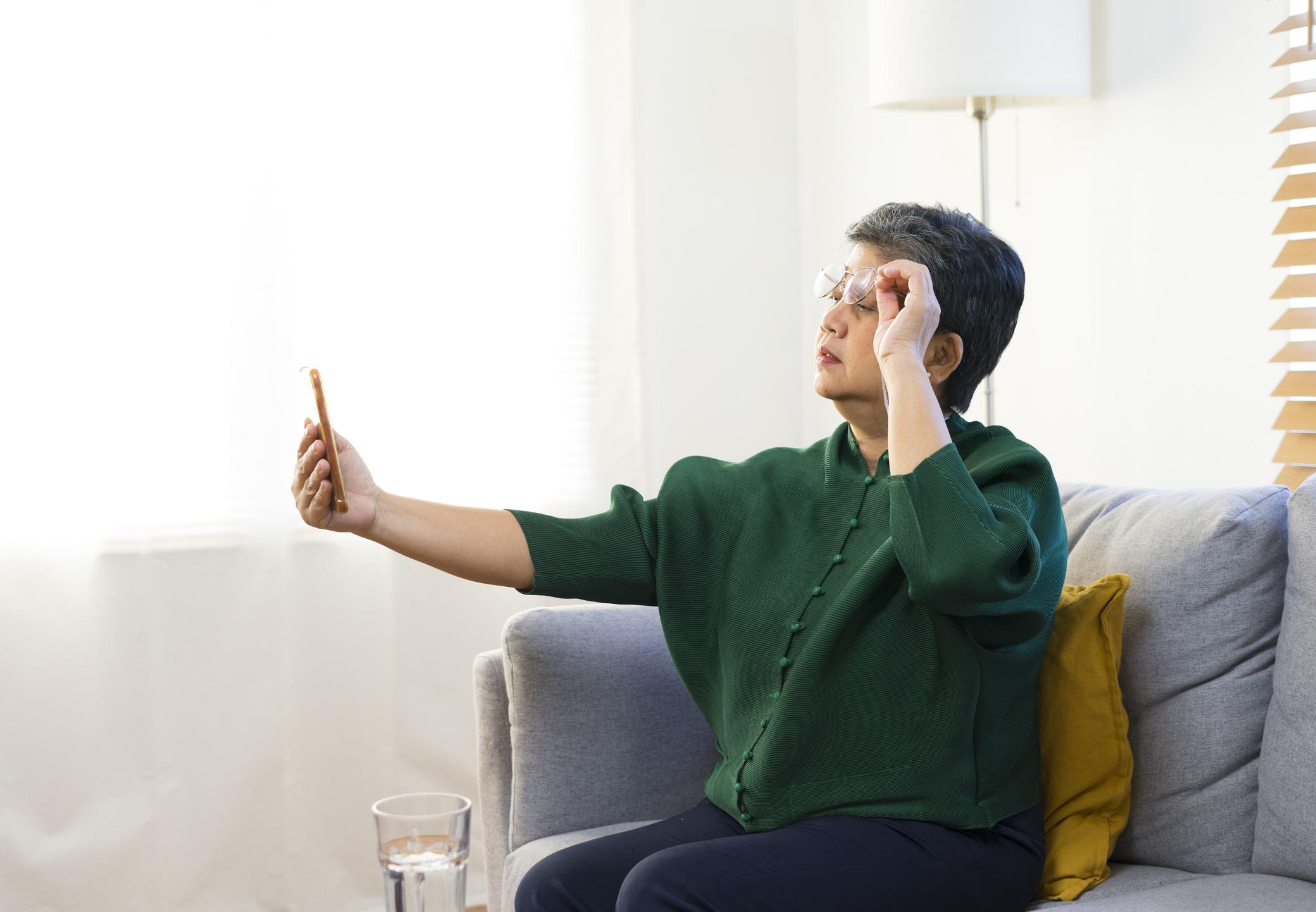Last Updated: April 4, 2024
What is presbyopia?
Presbyopia is an eye condition that makes it hard to focus on objects up close. It is a natural consequence of aging that happens when the lens of your eye loses its elasticity and flexibility. Presbyopia usually becomes noticeable to people between the ages of 40 and 45 and progresses until the late 40s to early 50s.

What are the signs and symptoms of presbyopia?
Some signs and symptoms of presbyopia include:
- the need to hold reading materials at arm’s length,
- blurred vision at normal reading distance,
- difficulty reading in dim light, and
- eye fatigue and headaches when attempting to do close work.
How is presbyopia diagnosed?
Your optometrist will check for presbyopia during a comprehensive eye exam.
How is presbyopia treated?
Treatment options for presbyopia include:
- reading glasses,
- bifocals, trifocals, or progressive lenses,
- contact lenses,
- laser surgery, and
- medication.
Presbyopia can make other common vision conditions like nearsightedness, farsightedness, and astigmatism more challenging.
Will I have to wear glasses all the time?
This will depend on several factors, including any other vision conditions you may have. You may only need your glasses for up-close work like reading and using a computer. However, wearing glasses all the time could be more beneficial if you multitask at different distances. In this case, multifocal or progressive lenses may work best for you. Your optometrist will find the right type of lens to help you see clearly.
Can I still wear contact lenses?
You will likely be able to wear contact lenses part-time or full-time, depending on your prescription and your daily visual needs.
Why do I need to change my glasses or contact prescriptions more often after age 40?
In your 40s, presbyopia gradually makes it more difficult for your eyes to focus properly. This typically happens over a 10-year period. To ensure clear vision between the ages of 40 and 55, it's usually necessary to update your eyewear every two to three years.